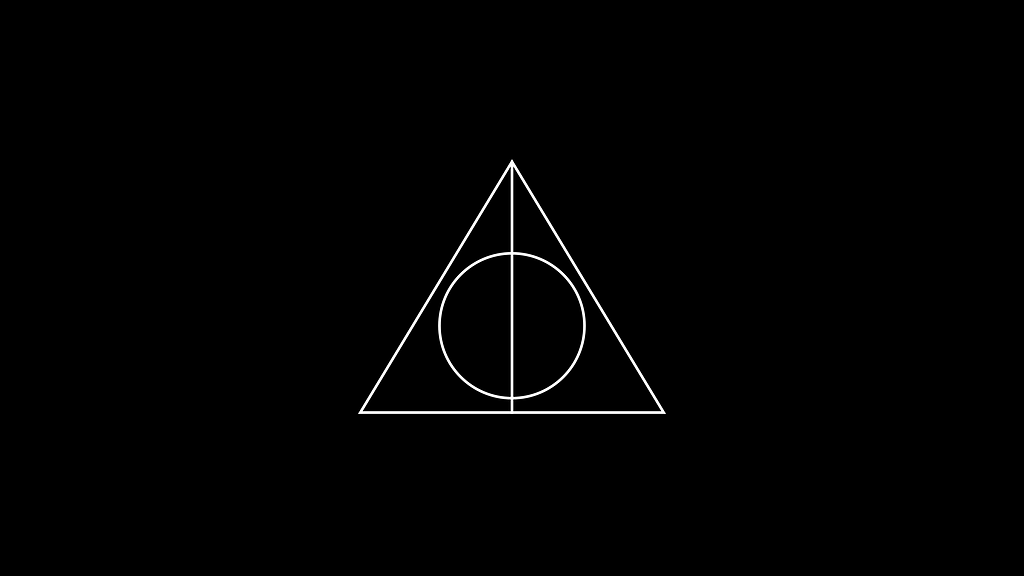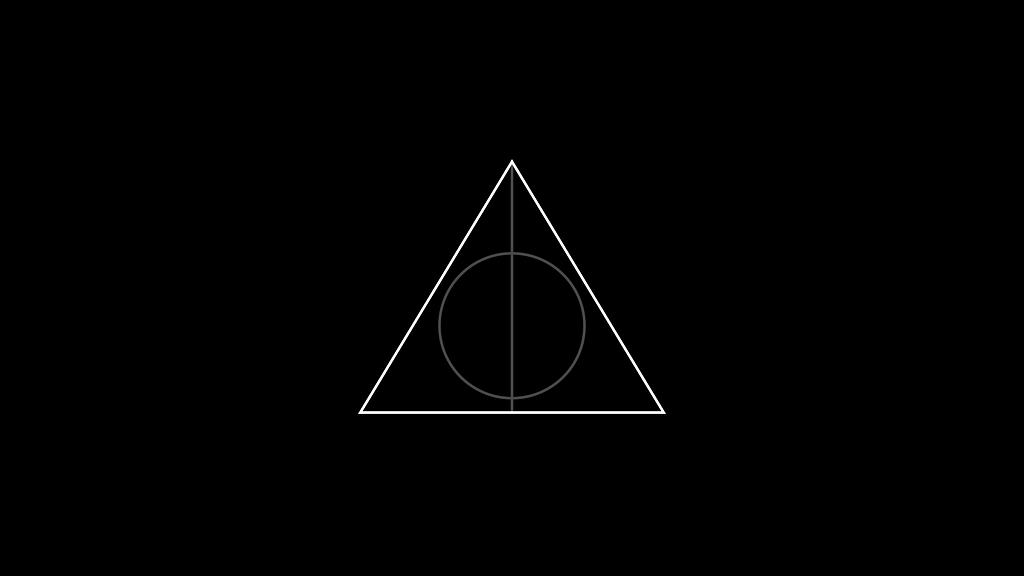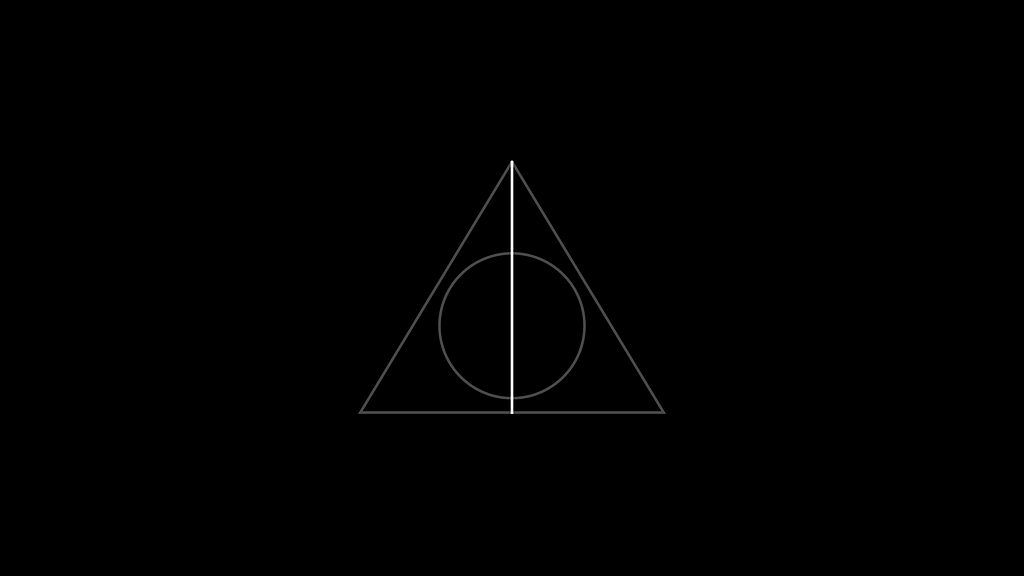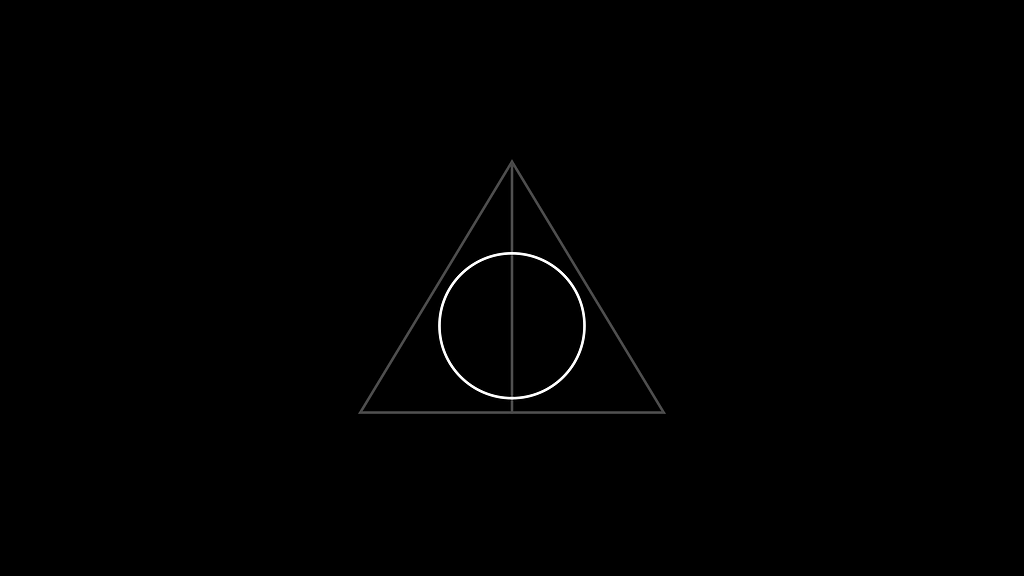Build Design Systems With Penpot Components
Penpot's new component system for building scalable design systems, emphasizing designer-developer collaboration.

uxdesign.cc – User Experience Design — Medium | Steve Selzer 
My dear muggle,
What I’m about to share with you is neither profound nor true. But then again, things aren’t always what they seem.
Insights like these are normally reserved for witches and wizards, but just this once, I insist you be let in on our little secret.
So without further ado, I present to you the magic key for unlocking powerful product design.
 The Deathly Hallows, the magic key.
The Deathly Hallows, the magic key.
That’s right, The Deathly Hallows. Three legendary magical items — the Cloak of Invisibility, the Elder Wand, and the Resurrection Stone. It is said that if a wizard were ever to possess all three, they would become one seriously powerful master of magic.
But then again, things arent always what they seem. Look again.
This symbol is actually a Venn diagram depicting the powerful triad of all product design teams — Research (the Cloak), Design (the Wand), and Content strategy (the Stone).
Hidden within lies the most magical symbol of them all — the Venn diagram . epicting the powerful triad of all product design teams . Research (the Cloak), Design (the Wand), and Content strategy (the Stone).
That’s right my dear muggle, the Deathly Hallows is a conceptual Venn diagram, too.
 The magic key, revealed.
The magic key, revealed.
Like each of the three Hallows, the Cloak of Invisibility is the only one of its kind in existence. Its power lies in its resistance to jinxes, hexes, and other spells which would normally render invisibility cloaks ineffective.
As told in The Tale of the Three Brothers, it was created by Death himself and bestowed to Ignotus Peverell — the youngest of the three brothers, who had the wisdom and shrewdness to ask only for the power to hide from Death. Unlike his two older brothers who met terrible fates, Ignotus would go on to live a full life and be regarded as an incredibly gifted and powerful wizard, as well as a modest and humble one.
Is there someone on your team who is modest about the truth, yet sharp when uncovering powerful insights and facts? Do you have a colleague who quietly observes from behind a two-way mirror, gleaning truths about how people think and behave?
Of course you do. It’s your Researcher — your Cloak of Invisibility. Imagine product design without the powerful insights a researcher brings to the team. Could you even function without them? And what about the data they collect to back your decisions? Like the hexes and jinxes that are powerless against the Cloak of Invisibility, your Researcher protects you from uninformed opinions, difficult critiques, and voices of dissent.
Equipped with these insights, you’re ready to move on to the next step in the product design process: conjuring up compelling concepts, and executing on them.

Any wizard with a wand can conjure magic (except for squibs, of course). But then there’s the Elder Wand — a wand so immensely powerful, so extraordinary, that wizards have committed unspeakable acts to possess it.
If one were to wield the Elder Wand, their magic would know no bounds. In the wrong hands, this could have devastating consequences. In the hands of a benevolent and responsible wizard, this tremendous power could bring about positive change in the world.
Now think of the person on your team who wields their Sharpie marker like a wand — someone who waves their arms around uttering nonsense muggle spells like “ideate!”, only to have pure conceptual gold take over their sticky notes. Think of the person who can transform those scribbles you call screens and make them, *poof*, pixel-perfect on your mobile device.
This, of course, is your Designer — the Elder Wand incarnate. They have the unique ability to visualize ideas and give them tangible, high-fidelity form.
But beware. No matter how good a designer’s creations, it’s possible they’ll be misused. People may act in their own best interests, or worse, manipulate designs to serve the needs of the business while ignoring the people they’re intended for. It’s crucial that designers consider risks and costs, not only the rewards of what could be.

No product is purely functional or visual. For there to be life — whether you’re building something new or attempting to raise your product from the dead — you’ll need the Resurrection Stone. It’s the only Hallow with the power to bring the dead to life.
To be clear, if your team uses Lorem Ipsum — a nonsense muggle language — as placeholder text, your product is already dead on arrival. There are no spells, charms, or magic that will save you. Never in the history of exceptional product design teams has content been treated as an afterthought.
But your team has that linguistic genius whose words give your interface that necessary conversational flow. Your wordsmith is masterful at crafting emails, landing pages, and social media campaigns to stave off your product from an otherwise untimely death.
I’m speaking of none other than the Content Strategist — your very own Resurrection Stone. They have the unique ability to transform your user experience into something intuitive and delightful. Their words give life and meaning to everything you create. They’re magical creatures, indeed.
Together, your Researcher, Designer, and Content Strategist form the Designerly Hallows — three legendary roles which, when possessed by a product team, make them more powerful and exceptional than all others. The good news is, you almost certainly have at least one of them on your team already. And if you don’t, you know what to do.
I hope these insights help you on your journey, my dear muggle. Best of luck to you and your team.

A Muggle’s Guide to Product Design was originally published in UX Design Collective on Medium, where people are continuing the conversation by highlighting and responding to this story.
AI-driven updates, curated by humans and hand-edited for the Prototypr community